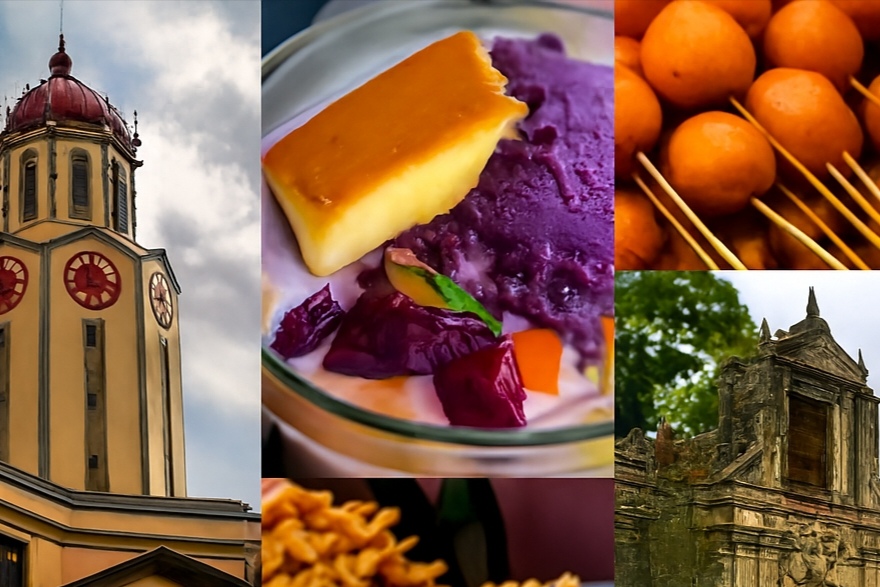Why National Geographic put Manila on the 2026 travel map
Manila’s moment has arrived. Chosen by National Geographic as one of its “Best of the World” destinations for 2026, the Philippine capital steps onto the global stage with a confidence that feels both overdue and undeniable.
According to National Geographic, this selection highlights Manila’s dynamic food culture, rich history, and evolving urban scene, making it a must-visit destination for travelers seeking depth and discovery.
Each year, the renowned travel authority selects 25 destinations that redefine global travel, and Manila made the cut not for beaches or island escapes—the city has none beyond Manila Bay—but for its rich culinary and cultural scene.
With the Michelin Guide visiting the Philippines for the first time this year, the city’s food scene has never been more exciting. Metro Manila’s history of trade has long shaped its identity, blending Spanish, Chinese, and Malay influences with Indigenous flavors—a combination that now flourishes in markets, casual eateries, and ambitious fine-dining rooms.
Markets such as Tutuban at night, Ugbo Tondo, and Salcedo on Saturdays pulse with life, where locals enjoy fish balls and halo-halo, according to the globe-roving editors of National Geographic. Meanwhile, malls like the SM Mall of Asia offer air-conditioned respite and extensive dining options.
Eating well in Manila is effortless. Manam serves crispy pancit palabok, while New Po Heng Lumpia House offers lumpia filled with meat, vegetables, peanuts, and seaweed. Mary Grace provides traditional merienda with cheese ensaymada and tsokolate, and Bebang is known for its modern halo-halo.
Fine dining reflects the same heritage: Toyo Eatery offers contemporary tasting menus and family-style seafood and pork kamayan feasts eaten by hand, and Kondwi in Poblacion presents multicourse Filipino tasting menus with inventive cocktails like turon infused with jackfruit and banana rum. National Geographic also mentioned Inatô, Metiz, and Gallery by Chele, where chefs reinterpret Filipino flavors with contemporary techniques; and Hapag, which emphasizes family-style bonding over meals.
Heritage restaurants, meanwhile, continue to preserve Manila’s culinary history: Alba presents paella in 11 variations, and Binondo’s Ho-Land and Eng Bee Tin maintain Filipino-Chinese traditions through hopia, tikoy, and mooncakes.
Casual and playful dining thrives too. Tadeo’s Filipino-Mexican fusion dishes, including sisig tacos and sinigang burritos, offer surprises, and Sarsa presents milkfish lumpia and rich kare-kare. Poblacion remains the city’s nightlife hub: Polilya for craft beer, Run Rabbit Run for whimsical cocktails, Raion for all-day drinks, and Spirits Library for live music and sophisticated mixology.
Manila’s cultural and historic sites also shine, as highlighted by National Geographic. Intramuros—the Spanish-era walled city—offers Fort Santiago overlooking the Pasig River, while Renacimiento Manila leads walking tours through landmarks such as the Manila Cathedral and San Agustin Church.
The National Museum complex, including Fine Arts, Anthropology, and Natural History, sits near Rizal Park and its Chinese Garden, offering free entry and easy exploration. Even the Pasig River ferry, now with a new electric vessel, offers a scenic route to Binondo and Intramuros.
For history and architecture enthusiasts, National Geographic showcases the Ayala Museum in Makati, which houses pre-colonial gold, ceremonial objects, and jewelry that trace the Philippines’ links to ancient Asian trade. The restored Manila Metropolitan Theater, a 1931 Art Deco masterpiece, and Bahay Nakpil-Bautista, a preserved early 20th-century residence in Quiapo, showcase the city’s mestizo heritage and architectural diversity.
Day trips outside the city offer contrast and escape. Mount Daraitan, Mount Pinatubo’s crater lake, Pagsanjan Falls, and Laguna’s hot springs are all within a few hours’ drive, allowing visitors to balance Manila’s urban energy with nature.
The dry season, from December to May, is ideal for visiting, with January through April offering the best weather, while May brings heat and December sees holiday crowds. The rainy season runs from June to November.
Complementing the seasonal rhythm, Manila’s hotel scene is expanding. Dusit Greenhills Manila will open atop San Juan’s tallest tower, featuring the Thai restaurant Benjarong, while the Mandarin Oriental in Makati returns after a decade-long hiatus. Bonifacio Global City’s Shangri-La The Fort offers luxury accommodations and globally inspired dining. Heritage lovers may prefer the Manila Hotel, while Lub D Manila Makati provides modern budget-friendly lodging, according to National Geographic.
Travelers arrive via Ninoy Aquino International Airport, with easy connections across Asia. Manila’s transport mix includes jeepneys, e-jeeps, habal-habal motorcycle taxis, buses, Grab, and increasingly popular private charter car services, which provide efficient and customizable ways to navigate the city.
In 2026, Manila is no longer just a gateway—it is a destination in its own right. Vibrant, layered, and ever-evolving, the city invites travelers to immerse themselves in a rich tapestry of history, culture, and cuisine, pulsing with unmatched energy.



0 Comment